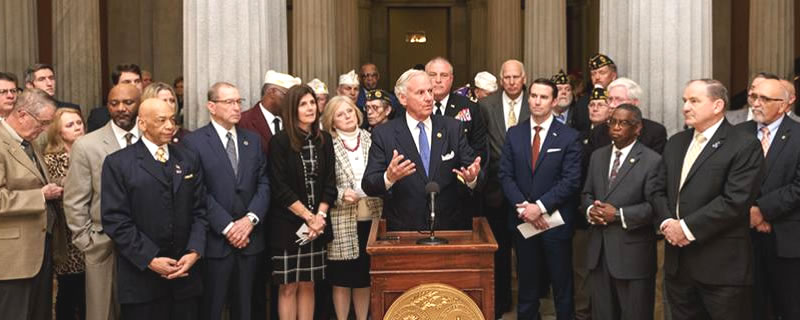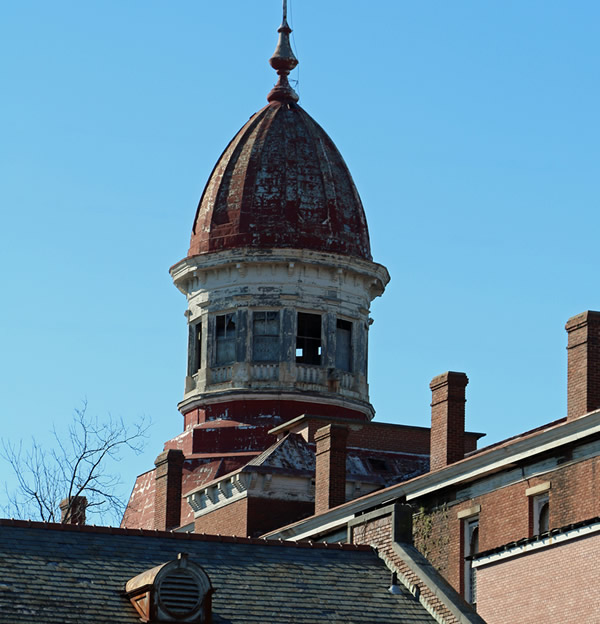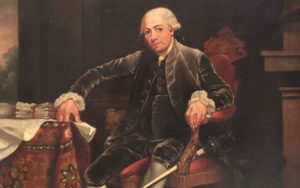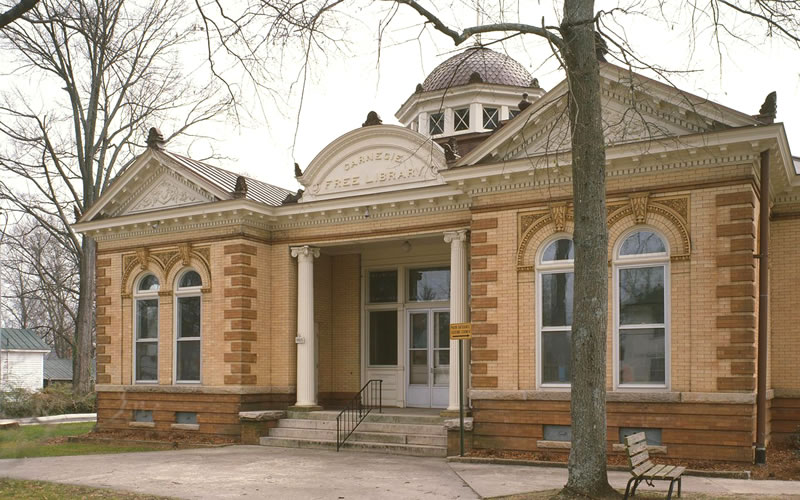NEWS: House taps brakes on education pilot programs in favor of teacher raises
BRIEFS: Veterans, solar, education, opportunity zones and more
TALLY SHEET: From guns to a hate crimes database (and more)
COMMENTARY, Brack: When being last can do the nation some real good
SPOTLIGHT: Charleston Animal Society
MY TURN, Boulware: Books + support are important to healthy childhood
FEEDBACK: Thanks for emphasizing education, more
MYSTERY PHOTO: Top of building shows wear and tear
S.C. ENCYCLOPEDIA: Union County
NEWS: House taps brakes on education pilot programs in favor of teacher raises

By Lindsay Street, Statehouse correspondent | In this “Year of Education” at the Statehouse, South Carolina likely won’t launch any new, innovative programs through its budget. But state leaders are seeking to shore up the beleaguered education system with teacher pay raises and an increase to the amount of money spent on every public school pupil.
Last week, House chief budget-writer Rep. Murrell Smith, R-Sumter, began wrapping up budget talks and, this week, the House Ways and Means Committee adopted reports from subcommittees. Smith spoke to Statehouse Report about what has surprised him about his first year chairing the House Ways and Means Committee.

“People … come to us and make requests for pilot projects or say, ‘We’ve got an answer to how we can improve education in South Carolina,’ and, to me, that’s emblematic of how we got in the situation we are,” Smith said. “You have to resist those requests.”
And while he called the ideas and current pilot programs worthy or meritorious, the proposed budget includes no new pilot programs for education.
Smith said that in recent years, pilot programs have grown from six lines to 112 lines. Education Oversight Committee (EOC) Executive Director Melanie Barton said the jump in one-time allocation of funds for education pilot programs began about six years ago.
Currently, education pilot programs are estimated at $5 million for programs through the EOC alone, Barton said. An estimate for programs run through the state Department of Education was not available but a spokesman said the number is likely less than the EOC. In last year’s budget, there are more than 45 lines with “pilot” in the provisos for the Department of Education.
- The EOC heads two of the largest pilot education programs in the state: Algebra Nation (a 2018 news story about its impact is available here) and Palmetto Digital Literacy (a 2018 report on its impact is available here). Both programs combined cost $2.8 million.
The brakes on pilot programs comes amid shrinking sales tax revenues — causing any money spent on the pilot programs to come from the general fund — but also shifting gears in the General Assembly as lawmakers try to make meaningful, holistic reform to public education in the state. Even with a projected $1 billion surplus, roughly $400 million is projected as recurring dollars and will quickly be snapped up by education initiatives, state employee pay raises and maintaining of the state’s increasingly expensive health and Medicaid plans.
“This year, it’s very clear that wholesale reform is needed and it’s stuff that’s been needed for over 20 years, so putting pilots on pause isn’t necessarily a bad thing,” education spokesman Ryan Brown said Thursday. “You got to have your core down before you can think about expanding the innovative part.”
In the House’s proposed budget, that core is mostly funding teacher salaries — an amount that dwarfs spending for pilot programs. The budget has set aside $159 million of recurring revenues to raise teacher salaries. The salaries would start at $35,000, a $3,000 increase over the current base salary, and offer 4- to 10.6-percent raises depending on length of time in the classroom.
“We’re going to take big steps towards raising the teacher pay,” Smith said.
‘A big win’
The state budget, by tradition, originates in the House. This year, it’s estimated at $9.3 billion.
Typically, the House passes its version by mid-March, the Senate passes its version by mid-April, and the legislature reconciles differences in May. The governor usually signs the budget into law by June.

On Thursday, Gov. Henry McMaster praised Smith’s budget-writing efforts, calling it “a big win” for the state that showed strong collaboration between the House leaders and the governor’s office.
But as the House readies to debate the budget in the coming weeks, there are two other items at play for education in Columbia:
- The massive education overhaul bill is currently being weighed by House Education and Public Works Committee and the Senate Education Committee. 3759 now offers a teacher’s bill of rights, starts new teacher pay at $35,000, and mirrors the House budget request for teacher raises. This bill will be debated in full committee next week. “But we can’t fund that in anticipation of the bill passing. We have to wait for the bill to pass,” Smith said.
- The state accounting office has been tasked with producing a report by May 9 on how the General Assembly funds and distributes education dollars in the state with the Education Finance Act. This is the base-student cost that districts get. Last month, McMaster, Lucas and Senate President Harvey Peeler asked the Revenue and Fiscal Affairs Office to review the formula. “There’s just no way we can do anything with the base-student cost when what we’ve requested is still pending,” Smith said.
A redefined metric and more in the budget
The proposed budget has a redefined new metric for education funding called “per-pupil cost” In the past, basic funding was called “base-student cost.” But the new metric includes these base costs plus teacher salaries and other items for school districts, according to Ways and Means Vice Chair Gilda Cobb-Hunter, D-Orangeburg. So comparing last year’s base-student cost of $2,485 to the new per-pupil cost is misleading, she said.
Here are some other highlights from other recurring fund expenses:
- State employees earning less than $100,000 will receive a 2 percent raise (an annual cost of $41.4 million);
- A $49.7 million bump in state health insurance plans; and,
- A $60 million bump in Medicaid spending.
There also is about $500 million that the state will see in non-recurring funds.
Perhaps the most historic item for non-recurring funds in the proposed Ways and Means budget is an income taxpayer rebate. Proposed in McMaster’s executive budgets, the taxpayer rebate was approved as part of provisos Thursday. Ways and Means staff could not find another example of such a rebate on the state level.
The rebate will take $35 million from non-recurring as taxpayer rebates and combine it with the $61 million the state should receive should the Simpsonville $1.5 billion lottery ticket be finally cashed in. Staff estimated the amount to equal $50 per taxpayer.

“There’s a lot of interest in the House to do that,” Smith said. S.C. Senate Majority Leader Shane Massey, R-Edgefield, told Statehouse Report that he was uncertain about how A taxpayer rebate would play in the Senate.
The House Ways and Means Committee budget also includes from non-recurring revenues:
- $40 million for the purchase of a new statewide voting system (See previous coverage here for the types of system being weighed);
- $85 million for a rural infrastructure fund to “lay the groundwork for industry to locate there,” Smith said; and,
- $100 million for higher education capital projects and deferred maintenance.
- Have a comment? Send to: feedback@statehousereport.com
NEWS BRIEFS
Veterans, solar, education, opportunity zones and more

By Lindsay Street, Statehouse correspondent | Gov. Henry McMaster and other elected officials pushed for legislation this week that would transform the S.C. Division of Veterans Affairs into a standalone cabinet agency.
Currently, the veterans advocacy agency is housed under the S.C. Department of Administration. About nine years ago, the effort began to bring the agency under the governor’s office.
The cost of such an office is unknown at this time, according to the state Revenue and Fiscal Affairs (RFA) Office. In a Feb. 5 fiscal analysis, RFA reported the governor’s office will have to provide the projected additional expense.
“It ought to be done this session,” McMaster said this week. He billed it as a promotion to bring the agency to a “full-fledged” cabinet agency.
Two similar bills call for the transformation:
- S.C. Sen. Katrina Shealy, R-Lexington, sponsored S. 454; and,
- S.C. Rep. Bobby Cox, R-Greenville, sponsored H. 3438.
South Carolina Adjutant General Maj. Gen. Van McCarty called the bills “the right thing to do” and “long overdue” because it would create greater advocacy for veterans in the state.
In other news:
![]() House passes Energy Freedom Act. The solar industry is commending the S.C. House of Representatives for unanimously passing a landmark energy bill, The Energy Freedom Act, in a bipartisan vote this week. Now the Senate will take up the bill. The legislation removes the cap on solar energy in S.C. homes. Solar advocates say this protects thousands of jobs in the growing solar industry. Read more about the bill here.
House passes Energy Freedom Act. The solar industry is commending the S.C. House of Representatives for unanimously passing a landmark energy bill, The Energy Freedom Act, in a bipartisan vote this week. Now the Senate will take up the bill. The legislation removes the cap on solar energy in S.C. homes. Solar advocates say this protects thousands of jobs in the growing solar industry. Read more about the bill here.
Trump admin visits. South Carolina was visited by members of the Trump administration this week for its work in education and investments in low-income communities:
- U.S. Secretary of Education Betsy DeVos stopped by Florence Thursday to view under-performing schools that saw state intervention, and to view workforce development at a technical college 20 miles away, S.C. Department of Education spokesman Ryan Brown told Statehouse Report. Read more in Florence Morning News.
- Vice President Mike Pence joined U.S. Sen. Tim Scott, R-South Carolina, for tour of a Columbia “opportunity zone” on Thursday. The Opportunity Zones were established in the major federal tax overhaul in 2017 and encourages business investment in low-income areas. Read more about the visit here.
Weekly update on Palmetto Priorities
Throughout the legislative session, we’ll provide you relevant updates related to our list of Palmetto Priorities, which are 10 big policy areas where major progress is needed for South Carolina to escape the bottom of lots of lists. Over the last week:
 HEALTH CARE: S.C. rural hospital miss ‘high risk’ listing. Rural hospitals in South Carolina are not on a list of “high risk” of closure. A new list puts 430 hospitals across 43 states on the list. See the list here.
HEALTH CARE: S.C. rural hospital miss ‘high risk’ listing. Rural hospitals in South Carolina are not on a list of “high risk” of closure. A new list puts 430 hospitals across 43 states on the list. See the list here.
GUN REFORM: S.C. congressmen seek to close “Charleston loophole.” U.S. Reps. Jim Clyburn and Joe Cunningham, both Democrats in South Carolina, spoke at Emanuel AME Church in downtown Charleston this week about lengthening gun background checks for some gun buyers. Clyburn said the federal legislation has a good chance of passing the House. Read more here.
GUN REFORM, PART II: Statehouse Republicans introduce bill for ‘constitutional carry.’ S.C. Rep. Bobby Cox, R-Greenville, is the lead sponsor of a bill that would expand gun carry provisions and remove concealed weapon laws through a “constitutional carry act.” Read the bill here.
ENVIRONMENT/JOBS: See above for House passage of solar-related legislation.
TAXES: House tax reform committee meets. The House Tax Policy Review Committee meets 15 minutes after adjournment Feb. 28 in room 516 of the Blatt building. On the agenda, the committee will look at sales tax exemptions and sales tax reform. See the agenda here.
POLITICS: Redistricting workshop Saturday. A free workshop is being held 10 a.m. to 4 p.m. Feb. 23 at 2015 Marion St. in Columbia. S.C. Rep. Gilda Cobb-Hunter, D-Orangeburg, and S.C. Sen. Mike Fanning, D-Fairfield, are among the facilitators in the meeting, which calls for an end to gerrymandering in the state. Read more here.
Looking ahead
Click below for other items coming up in the Statehouse:
- House calendar
- Senate calendar
- Have a comment? Send to: feedback@statehousereport.com
TALLY SHEET: From guns to a hate crimes database (and more)
Members of the General Assembly filed more than 90 new bills and resolutions over the last week that called for expanded gun rights and establishment of a hate crimes database to reform for the state Department of Natural Resources and procurement codes. Among the highlights:
![]() IN THE HOUSE (see all House bills)
IN THE HOUSE (see all House bills)
Guns. H. 3999 (B. Cox) seeks to expand gun carry provisions and remove concealed weapon laws through a “constitutional carry act,” with several provisions.
Tenant eviction. H. 4005 (Huggins) seeks to make it easier for landlords to eject certain tenants, with several provisions.
Housing. H. 4006 (Pendarvis) seeks a law to allow a legislative delegation to declare a “state of emergency” related to housing and to suspend housing authority commissioners, with several provisions.
DNR updates. H. 4009 (Hixon) seeks a plethora of changes related to the state Department of Natural Resources from members to duties and more. There are so many changes that the bill summary took up three pages. H. 4012 (Hixon) is related, with several other reforms and definitions.
PRT. H. 4020 (Clary) seeks to provide new duties for the state Department of Parks, Recreation and Tourism and repeal a law related to its division of community development.
Workforce education. H. 4022 (Mace) seeks a five-year workforce education school pilot program, with several provisions.
Elected judges. H. 4031 (King) seeks a resolution to propose a constitutional amendment to change selection of judges to be in nonpartisan elections, with several provisions.
Party registration. H. 4044 (Fry) seeks a change in voter registration law to allow voters to voluntarily disclose their political party affiliation, with several provisions.
Hate crimes. H. 4045 (King) seeks to establish a state hate crimes database at SLED.
Teacher pay. H. 4050 (Brown) seeks a 10 percent pay hike for teachers.
IN THE SENATE (see all Senate bills)
Procurement. S. 530 (Leatherman) is a sweeping update to the state’s procurement code with more than 4 pages of description in the bill’s summary. This is a complicated and far-reaching bill related to procurement rules.
Election change. S. 537 (Rice) seeks to update state election rules to keep state lawmakers from using public funds or letterhead to communicate with voters 90 days and less from an election, with several provisions.
BRACK: When being last can do the nation some real good

By Andy Brack, editor and publisher | Here’s a way that by being last, South Carolina lawmakers could do something really good: Pass the Equal Rights Amendment. Only one more state legislature has to approve it for it to become part of our nation’s basic protections.
 You might have forgotten about the amendment, first approved by Congress in 1972, following the rise of the women’s movement in the 1960s. After approval, the amendment went to the states for ratification. Thirty-eight states are needed for ratification.
You might have forgotten about the amendment, first approved by Congress in 1972, following the rise of the women’s movement in the 1960s. After approval, the amendment went to the states for ratification. Thirty-eight states are needed for ratification.
Right out of the gate, states forged ahead with Hawaii approving on the same day as the final congressional vote. In 1972, 28 states of the 38 needed to ratify approved the amendment. It looked like it was on its way.
But when conservative organizer Phyllis Schlafly started a “Stop ERA” movement that year, things slowed down. Schlafly argued that the ERA, rather than guarantee equal protection for women under law, would create problems for them receiving Social Security, alimony and other benefits. While those arguments were batted down over time, they took the steam out of the ratification push.
By 1979 when a congressionally-imposed deadline approached, three states were needed for final approval. Legal wrangling over the deadline ensued with the judicial branch essentially leaving it to Congress whether to adhere to a deadline or ignore it. By the dawn of the 21st century, the ERA was mostly a distant memory.
Then came the #MeToo movement, pink knitted hats and women’s marches on government institutions after the 2016 presidential election. On March 22, 2017, the 45th anniversary of congressional approval, the Nevada legislature approved the amendment, followed by Illinois a year later. Nevada lawmakers moved forward after being counseled “if three more states sent their ratification to the appropriate federal official, it would then be up to Congress to determine whether a sufficient number of states have ratified the Equal Rights Amendment.”

State Rep. Gilda Cobb-Hunter, D-Orangeburg, hopes the final state to ratify the ERA is South Carolina. She and State Rep. Leon Stavrinakis, D-Charleston, separately pre-filed ratification bills in December. Both measures have bipartisan support, most critically that of House Judiciary Committee Chair Peter McCoy, R-Charleston.
Cobb-Hunter said while there have been advances for women since 1972 throughout society, the ERA is needed “because first and foremost, it’s the right thing to do. Women deserve equal protection under the law. We [in South Carolina] are known for so many negative things. It would be neat if we were known for something that guarantees rights, given our sordid civil rights history.”
She added that federal protection for equal rights would protect women across state lines because state laws aren’t always similar. Constitutional protection would provide an avenue to ensure fair treatment.
State Rep. Nancy Mace, R-Berkeley, isn’t convinced the ERA is needed, citing some of the same arguments Schlafly used five years before Mace was born.
“I believe women already have equal rights as protected under the 14th Amendment,” Mace said. “This legislation also doesn’t take into consideration some of the collateral damage it might have.” She listed concerns about women not receiving Social Security benefits, alimony, child support, for example.
Not true, said Jennet Robinson Alterman, chair of the city of Charleston’s Commission on Women. Earlier this month, the commission proposed a pro-ERA resolution approved unanimously by Charleston City Council.
 “Wives and widows already receive Social Security,” she said. “Child support is based on ‘best interests of the child.’ Alimony is based on the earnings and assets of both spouses Many women currently pay alimony to the ex-husbands.”
“Wives and widows already receive Social Security,” she said. “Child support is based on ‘best interests of the child.’ Alimony is based on the earnings and assets of both spouses Many women currently pay alimony to the ex-husbands.”
Alterman told council members it is time for the ERA to be approved.
“We believe that women deserve full and equal rights in the U.S. Constitution,” she said. “The only right guaranteed for women in the Constitution is the right to vote.” And she reminded council members of the words of conservative jurist Antonin Scalia in 2011: “Certainly the Constitution does not require discrimination on the basis of sex. The only issue is whether it prohibits it. It doesn’t.”
Let’s expand legal protections for women. And let’s encourage lawmakers to have the Palmetto State become the 38th state to approve the measure and push it over the goal line.
- Have a comment? Send to: feedback@statehousereport.com.
SPOTLIGHT: Charleston Animal Society
 We’re pleased today to shine our spotlight on the Charleston Animal Society, leader in the effort to make Charleston County a safe place for animals. Now the society is working to expand its Charleston success statewide to energize the state to reshape its 300-plus shelters and animal organizations into a no-kill network that stretches from Walhalla to Little River to Daufuskie Island.
We’re pleased today to shine our spotlight on the Charleston Animal Society, leader in the effort to make Charleston County a safe place for animals. Now the society is working to expand its Charleston success statewide to energize the state to reshape its 300-plus shelters and animal organizations into a no-kill network that stretches from Walhalla to Little River to Daufuskie Island.
Safe and healthy communities, neighborhoods and families don’t just happen – they’re built. “No Kill – No Harm – No More” shines a spotlight on animal abuse and family violence, which are often perceived and treated as separate issues. However, animal abuse is often the tip of the iceberg to larger issues in the home, such as child abuse, elder abuse or domestic violence.
- South Carolina’s most honored charity four years in a row
- National model for success
- Southeast’s only AAHA-accredited combined clinic and shelter
- Focused on solving problems rather than reacting to them year after year
- Publishes Carolina Tails, the largest pet magazine in S.C.
- No Kill. No Harm. No More. is a “movement” comprised of two major initiatives: No Kill Charleston and No Kill South Carolina.
- Learn more about the Charleston Animal Society and its work to create a network of humane network for the animals that bring joy to our lives.
MY TURN, Boulware: Books + support are important to healthy childhood

By Callee Boulware, special to Statehouse Report | When we consider what we know about children and families in the critical early years, it is important think about what research supports. We know access to books is an important part of a healthy childhood. What we also know is that books, on their own, will not accomplish what children need. It is essential that parents and caregivers are supported, educated, and engaged by voices they trust in understanding what to do with books, when, and why.

Simply stated, in addition to distributing books, we must also wrap around families and support the routines and behaviors that will make daily reading, stories and increased language interaction a reality. The Reach Out and Read intervention is working every day across every county in South Carolina towards this goal.
Routines and relationships are critical components of a child’s earliest years, building bonds with those who love them and building their brains through meaningful and consistent “serve and return” interactions. Through Reach Out and Read in check-ups across South Carolina, families are given critical skill-building and knowledge around how to help create these important interactions together with their children at home, time focused together on books, stories, and snuggles. Reach Out and Read is helping to change the story for families in every county of our state.
Reach Out and Read (ROR) is an evidence-based intervention integrated into medical clinics throughout the Carolinas and the country. It is designed to foster intentional skill-building in parents, resilience in families, and positive bonding between children and families. We know shared reading can help develop strong parent-child bonds that last a lifetime, buffering toxic stress and building resiliency. Literacy is a critical skill and early childhood is the critical stage for equipping children for a lifetime of success.
 Reach Out and Read’s two-generation approach helps move primary care to a more comprehensive approach to child and family health. The intervention lives at the intersection of health and literacy. Trained medical providers use a valuable tool, books and anticipatory guidance, to talk to parents and other caregivers about what’s happening in their lives and discuss challenges, opportunities and the benefits of reading aloud to their young children. The effects of literacy promotion on early brain development, including improved language skills and school readiness, are well-documented.
Reach Out and Read’s two-generation approach helps move primary care to a more comprehensive approach to child and family health. The intervention lives at the intersection of health and literacy. Trained medical providers use a valuable tool, books and anticipatory guidance, to talk to parents and other caregivers about what’s happening in their lives and discuss challenges, opportunities and the benefits of reading aloud to their young children. The effects of literacy promotion on early brain development, including improved language skills and school readiness, are well-documented.
ROR has been hard at work in growing and expanding across the state for 20 years. Every day in checkups across South Carolina thousands of primary care providers, who are trained in the ROR intervention, are approaching well-visits in a different way. At each check-up, a ROR trained provider supports parents in feeling comfortable sharing books, language, stories and snuggles together with their young child as a part of their daily routine. At the same time, the book and interactions in the check-up become an important part of the providers developmental surveillance of the child and a best practice of primary care. At the end of the check-up, families take home a new, developmentally aligned book to implement their “prescription to read.” In the clinic, ROR provides an important foundation while other resources and connections can be built to support families.
ROR is endorsed by the American Academy of Pediatrics and is a part of their Bright Futures guidelines. Across South Carolina, more than 150 clinical locations participate in the Reach Out and Read intervention. Together, Reach Out and Read trained providers are serving more than 142,000 children and their families each year (prescribing more than 280,000 books EACH YEAR). What makes the ROR intervention so unique are a few key elements. The intervention:
- utilizes the trusted and consistent voice of the medical provider
- can be scaled and is population based, as more than 90% of children 0-5 visit their doctor each year
- has a significant evidence-base, demonstrating success in helping children enter school more prepared for success and support positive routines and behavior change in parents
- is two-generational, and supports the important parent/child dyad
The S.C. General Assembly has been supporting ROR in SC for three years. This investment has allowed us to expand our reach, serving 60,000 additional children and their families since fiscal year 2016. The investment by the state of South Carolina is a catalyst – it allows ROR to leverage the General Assembly’s support with a match from private donations, providing a sustainable public/private partnership to continue to grow ROR to serve more children and families across South Carolina.
It is critical to focus on the hard work of supporting children and families in the early years. We must meet families where they are and support the touchpoints and structures that are in place. The primary care medical home is a critical place to support families in meaningful ways. The work is not easy, but we can rely on the strength of evidence-based interventions focused on two-generational supports, like ROR, as a foundational part of the system for families in South Carolina.
Callee Boulware is executive director of Reach Out and Read Carolinas.
- Have a comment? Send to: feedback@statehousereport.com..
FEEDBACK
FEEDBACK: Thanks for emphasizing education, more
To the editor:
![]() I want to say again how much I admire and respect your continued emphasis on education. As one who spent more than 50 years as a college professor, I have seen students from humble and modest backgrounds soar to the highest heights. Many are successful entrepreneurs, educators and public servants. Right now, one of my former students is in the U.S. House of Representatives, while others are in state legislatures and local county and city councils. Educational improvement is difficult and complex. Keep on keeping on.
I want to say again how much I admire and respect your continued emphasis on education. As one who spent more than 50 years as a college professor, I have seen students from humble and modest backgrounds soar to the highest heights. Many are successful entrepreneurs, educators and public servants. Right now, one of my former students is in the U.S. House of Representatives, while others are in state legislatures and local county and city councils. Educational improvement is difficult and complex. Keep on keeping on.
— J. Herman Blake, Johns Island, S.C.
Emphasize the family unit in education
To the editor:
I am in strong agreement with the viewpoint [Waters, 2/15]. New facilities do not and cannot replace the need for emphasis on the family unit. Parents and caregivers need the support and tools to support their students in and out of school. Based on a 24-hour day, only eight hours are with the school. Help is needed for the remaining 16 hours.
— Tony Fowler, Florence, S.C.
Scrap the education reform bill
To the editor:
[House Speaker Jay] Lucas spent six months “learning about the system.” I have spent six years earning degrees (bachelor’s and master’s) and 22 years teaching. I know much more about the system, as do all teachers in South Carolina, yet our input/expertise was not sought out.
I don’t know what Lucas’ agenda is, but I feel it involves him and not the children, teachers and citizens of South Carolina. Scrap the bill and start over with input from educational experts, the teachers of South Carolina!
— Vicki Ball, Rock Hill, S.C.
Send us your thoughts … or rants
We love hearing from our readers and encourage you to share your opinions. But you’ve got to provide us with contact information so we can verify your letters. Letters to the editor are published weekly. We reserve the right to edit for length and clarity. Comments are limited to 250 words or less. Please include your name and contact information.
- Send your letters or comments to: feedback@statehousereport.com
MYSTERY PHOTO: Top of building shows wear and tear

Today’s mystery could be kind of tough. A reader sent along this shot, accompanied by a good story. The photo is in South Carolina, but that’s the only hint you’ll get. Send your guess to feedback@statehousereport.com. And don’t forget to include your name and the town in which you live.
Our previous Mystery Photo
 Our Feb. 15 mystery, “Who’s this old guy?” was a Charles Fraser painting of South Carolina’s Henry Laurens that is on display at the Gibbes Museum of Art in Charleston.
Our Feb. 15 mystery, “Who’s this old guy?” was a Charles Fraser painting of South Carolina’s Henry Laurens that is on display at the Gibbes Museum of Art in Charleston.
Laurens (1724-92), a South Carolinian who served as president of the Second Continental Congress, was the only patriot to have been imprisoned in the Tower of London during the Revolutionary War, writes Dale Rhodes of Richmond, Va.
Sleuth George Graf correctly identified the painting as being Laurens, but said the artist was John Singleton Copley. According to the Gibbes, its painting of Laurens is an example of an artist copying an artist. It said that Fraser likely never saw the original, but created his version from an engraving.
Laurens was one of the richest man in the colonies due to the slave trade, Graf shared. His firm, Austin & Laurens sold about 7,800 African men, women and children between 1751 and 1761, according to various sources. “Laurens was exchanged after the Battle of Yorktown for General Charles Cornwallis. Shortly thereafter he was instructed to join Benjamin Franklin, John Jay, and John Adams as a member of the peace commission.”
Others who correctly identified Laurens were Frank Bouknight of Summerville; Don Clark of Hartsville; and Philip Cromer of Beaufort. Congratulations all!
Send us a mystery: If you have a photo that you believe will stump readers, send it along (but make sure to tell us what it is because it may stump us too!) Send to: feedback@statehousereport.com and mark it as a photo submission. Thanks.
S.C. ENCYCLOPEDIA
HISTORY: Union County

S.C. Encyclopedia | A Union County of 540 square miles was created by the state legislature in 1785. A century later, in 1897, the county lost its two northernmost townships in the creation of Cherokee County, reducing Union County to 514 square miles and establishing its modern boundaries. Probably the first white settlers in the area were James McIlwaine and a party of Scots-Irish Protestants who arrived from Virginia and Pennsylvania about 1751. Others followed and were soon joined by large numbers of Quakers. Baptists were also among the early settlers, and an entire congregation settled on lower Fairforest Creek around 1760. To save effort, inhabitants of various denominations in the Brown’s Creek area built a common house of worship and called it a “union” church. The generic name became a given name, and in 1785 Union County was named in honor of that early church.
During the Revolutionary War residents were active on both sides of the conflict and a civil war raged in what was to become Union County, while the pacifist Quakers hunkered down and rode out the storm as best they could. Probably no other county in South Carolina was as evenly divided between Tories and patriots as Union County was. At least five Revolutionary War battles occurred within or exactly on the later boundaries of the county. The most important battle took place at Blackstock’s on November 20, 1780, when state militiamen under Thomas Sumter defeated a British force commanded by the notorious Banastre Tarleton.
After the return of peace and the creation of the actual county, a log courthouse and a log jail were built in 1786. Space for the public buildings had been donated by the county’s greatest Revolutionary War hero, Colonel Thomas Brandon. In May 1788 Brandon also led Union County representatives at the state’s ratification convention, where the entire delegation opposed adoption of the new national Constitution.
Cotton became king soon after 1800, and large plantations appeared in the fertile southern parts of Union County, where numerous slaves worked under the eyes of the overseers. Area Quakers felt uncomfortable with this sudden increase in the slave population and abandoned Union in the first decade of the nineteenth century, resettling north of the Ohio River, primarily in southwestern Ohio. Poor soil conservation practices left fields eroded and red by the 1830s, sparking a second exodus from the county as people left for new lands in the Southwest. Although many emigrants took their slaves with them, established plantations grew larger as the slave population increased and the white population declined. Slaves became a majority in the county in the 1840s, and blacks continued to outnumber whites until about 1915. Efforts were made to restore prosperity to the county in the 1850s. In 1858 John L. Young, a local merchant and railroad entrepreneur, succeeded in linking Union to the outside world with a railroad, the Spartanburg and Union. The following year he pushed the line to Spartanburg, which remained the terminus of the line until after the Civil War.
In 1860 the governor of South Carolina was William H. Gist of Union. On October 5, 1860, Gist dispatched his Union County first cousin, States Rights Gist, as special envoy to the governors of other southern states to sound them out on the question of secession. When States Rights sent back letters assuring the governor that the Deep South would follow a secession move by South Carolina, Gist called a special session of the legislature to convene on November 5, the day before it was expected that Lincoln would be elected. When their worst fear was realized, the legislators voted to call a state convention. That convention on December 20, 1860, unanimously signed the Ordinance of Secession, an instrument written in the hand of convention secretary Benjamin F. Arthur of Union. Many Union County men fought in the Confederate army, and after the war they were especially active in resisting what they considered to be the tyranny of Reconstruction. The Union County Ku Klux Klan was among the most active in the state, and in February 1871 the county was the scene of the largest KKK raid that ever occurred in the South. “Carpetbag” rule was ended in the county in 1872, four years before the Democratic “redemption” of 1876 brought Reconstruction to an end in the state as a whole.
Trapped in postwar poverty, most Union County residents, black and white, were small cotton farmers or sharecroppers in the late nineteenth century. Not until 1893 did a measure of prosperity return in the form of cotton mills. Thomas Cary Duncan was the county’s preeminent industrialist, and his Union Cotton Mill was the first in the county to go into production. Lockhart Mill and others soon followed, and by 1907 some 4,075 workers were tending 7,645 looms and 285,800 spindles in the county. In an era of segregation African Americans were not employed inside the mills, and whites from the North Carolina mountains filled many mill jobs. During the period between the world wars, many blacks left the county and migrated north in search of better lives.
Following World War II, Union County entered a second phase of industrial development and by the 1990s possessed metal working plants, such as those operated by Torrington and Webb Forging, although most manufacturing remained textile-related. Cotton growing declined after the 1920s and all but disappeared by the 1970s, being replaced by forestry, cattle raising, and soybean farming. With the return of forests, deer reappeared in the 1960s and eventually drove out soybeans, which were regarded as a delicacy. At the end of the twentieth century the taking of deer by both local and out-of-county hunters had become an industry in itself, and deer coolers (to process the meat) and hunt camps sprang up all over the county. Throughout the twentieth century, economic growth balanced with economic difficulties, and thus the county’s population remained almost exactly the same for some ninety years, hovering just above the thirty-thousand level. Despite changes, history remained a real presence in the county, with many Union inhabitants descended from longtime residents.
— Excerpted from an entry by Allan D. Charles. This entry may not have been updated since 2006. To read more about this or 2,000 other entries about South Carolina, check out The South Carolina Encyclopedia, published in 2006 by USC Press. (Information used by permission.)
ABOUT STATEHOUSE REPORT
Statehouse Report, founded in 2001 as a weekly legislative forecast that informs readers about what is going to happen in South Carolina politics and policy, is provided to you at no charge every Friday.
- Editor and publisher: Andy Brack, 843.670.3996
- Statehouse correspondent: Lindsay Street
More
- Mailing address: Send inquiries by mail to: P.O. Box 22261, Charleston, SC 29407
- Subscriptions are free: Click to subscribe.
- We hope you’ll keep receiving the great news and information from Statehouse Report, but if you need to unsubscribe, go to the bottom of the weekly email issue and follow the instructions.
- © 2019, Statehouse Report. All rights reserved.















 We Can Do Better, South Carolina!
We Can Do Better, South Carolina!